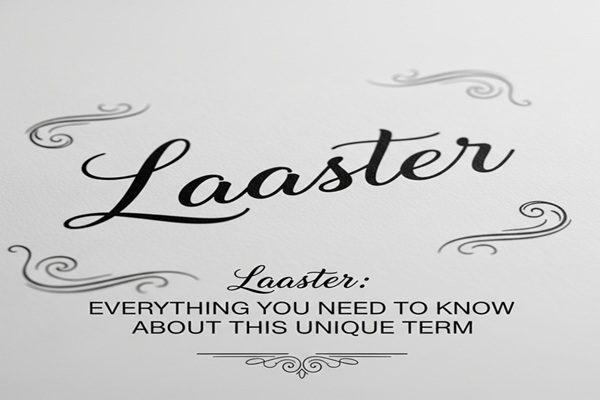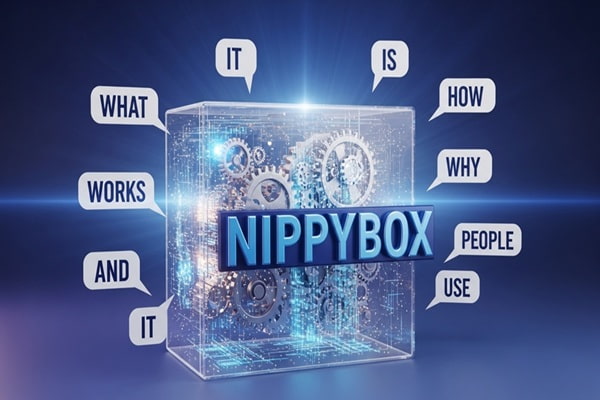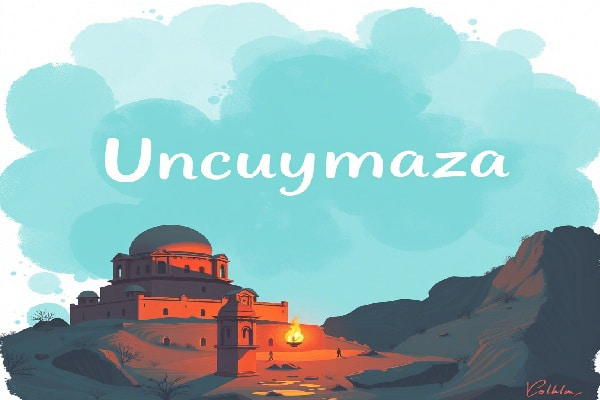Have you ever come across a word that just stuck with you—even if you weren’t exactly sure what it meant? That’s exactly what’s happening with the word “laaster.” It’s not your everyday vocabulary, but somehow, it’s showing up in conversations, art, memes, and even the occasional marketing campaign.
So what’s the story behind this intriguing term? Where did it come from? What does it mean? And why is everyone suddenly using it?
Let’s unpack the mystery of laaster—from its origin and meaning to how it’s shaping modern culture and language.
What Is “Laaster,” Anyway?
In simple terms, laaster is a unique word with fluid meaning. At first glance, it might look like a typo or a made-up slang term—but dig a little deeper, and you’ll find that it carries an emotional weight many people relate to.
While it doesn’t come from a dictionary you’d find on a classroom shelf, “laaster” is believed to have roots in older dialects. Linguists suggest that it may be tied to ancient words meaning “to linger,” “to remain,” or “to hold onto.”
That subtle combination of stillness and emotional resonance makes it a favorite for expressing moments that feel hard to describe—nostalgia, surprise, emotional presence, or even irony.
The Emotional Meaning Behind “Laaster”
What makes laaster so interesting is how it captures the in-between moments of life—the ones that don’t have neat labels. Think of those fleeting memories that stick with you for no clear reason, or that strange mix of sadness and warmth when you revisit a childhood home.
Some people use laaster to describe the feeling of not being able to let go of a thought or emotion. Others use it when they want to highlight something unexpected or oddly charming.
It’s this emotional flexibility that makes the word so appealing—it allows you to say a lot without needing a long explanation.
How People Use “Laaster” in Everyday Life
One of the coolest things about laaster is how it fits into so many different types of conversations. Depending on the situation, it can mean different things—but that’s part of the fun.
Here are a few examples of how laaster pops up:
1. In Casual Chats
You might hear someone say, “That song gave me such laaster vibes.” It could mean nostalgia, comfort, or just something that lingered emotionally.
2. On Social Media
Laaster is all over memes and caption culture. Think tweets like:
“Me watching my comfort show for the 10th time instead of doing anything productive: #laaster.”
3. In Creative Work
Writers, poets, and musicians are using laaster to represent emotional depth. It’s becoming a kind of shorthand for those hard-to-name feelings that live between the lines.
4. In Cultural Discussions
In more thoughtful conversations, laaster is used to talk about identity, memory, or even cultural shifts—like holding on to traditions while adapting to new norms.
Also Read : Protocolo Operacional Padrao: A Complete Guide to Standard Operating Procedures
Why “Laaster” Is Becoming a Cultural Buzzword
We live in a time where people are craving authenticity. We want words that help us connect—not just describe.
That’s where Laaster shines. It’s:
-
Emotionally expressive
-
Context-flexible
-
A little bit mysterious
-
Easy to personalize
Laaster fits right into today’s digital age, where communication is fast, visual, and emotionally driven. It offers an alternative to overused expressions like “vibe,” “mood,” or “aesthetic.” And because it doesn’t have one strict definition, people feel free to make it their own.
Misunderstandings and Controversies
Of course, with any trending word, there are bound to be some bumps along the way.
Common Misinterpretations
-
Some confuse laaster with “laster” (which can mean “burden” in Dutch or Norwegian), changing the tone completely.
-
Others think it’s just Gen Z slang or a passing TikTok trend—without realizing there’s deeper cultural interest growing around it.
Cultural Debates
-
Some language purists argue that words like laaster dilute the richness of traditional vocabulary.
-
Others believe the term should be reserved for specific cultural or regional use, making its broader adoption controversial.
But like any evolving word, its meaning and reach are shaped by the people who use it. And that’s what keeps the conversation going.
Laaster in the World of Marketing and Branding
Yes, even businesses are jumping on the laaster train.
Some brands are weaving it into ad campaigns to sound more relatable and emotionally in tune with younger audiences. You might see a skincare company say, “Give your skin that laaster glow,” or a clothing line promoting their pieces as “laaster fits.”
Why does this work?
-
It makes the brand sound more in touch with cultural trends.
-
It creates curiosity. Not everyone knows what laaster means—but they want to find out.
-
It taps into emotion, which drives connection (and, let’s be honest, sales).
The Beauty of a Word Without Limits
At this point, you might be wondering: Does laaster even mean anything if it means everything?
And here’s the honest answer: That’s exactly what makes it powerful.
We’re living in a world where emotions are complex and identities are fluid. People are exploring language that gives them room to express things in new ways—and laaster fills that need.
It may not follow traditional rules, but it opens the door to emotional nuance. And that’s something language always evolves to support.
How to Use Laaster in Your Own Life
Want to try weaving laaster into your own conversations? Here’s how:
-
To describe a moment: “That afternoon sunlight felt so laaster.”
-
To express nostalgia: “I found an old letter from college and just sat in the laaster for a while.”
-
To describe emotional attachment: “There’s still a bit of laaster in that song for me.”
-
To share something uniquely personal: “It’s hard to explain, but this movie had laaster written all over it.”
Don’t worry about getting it “right.” Just let the feeling guide you.
Final Thoughts: Why Words Like “Laaster” Matter
At its heart, laaster is about holding onto something real in a fast-moving world. Whether it’s a memory, a feeling, a moment of clarity, or even confusion—this word helps give it shape.
And as more people search for meaning in their day-to-day conversations, laaster offers a gentle reminder that language doesn’t have to be rigid. It can be fluid, expressive, and deeply personal.
So the next time you’re trying to describe something that doesn’t quite have a label—reach for laaster. It might be the perfect word you didn’t know you needed.












Leave a Reply